The United States is home to a diverse array of beautiful college campuses, each offering a unique blend of architectural styles and natural landscapes.
These campuses are not just centers of learning but also havens of breathtaking beauty that combine historical architecture with modern designs. The architectural styles vary widely, ranging from Collegiate Gothic to Modernist, and from Romanesque to Neo-Classical.
In different regions across the U.S., you can find campuses boasting large expanses of land, often hundreds or even thousands of acres, providing a spacious and serene environment for students. The campuses are characterized by their lush green spaces, picturesque settings, and often a significant percentage of students residing on campus.
The Northeast, in particular, is known for its aesthetically pleasing campuses with styles like Georgian and Gothic Revival, while the South features campuses with Mediterranean Revival and Neo-Gothic architecture.
In these regions, the campuses are not just educational institutions but also cultural and historical landmarks, reflecting the rich heritage and academic traditions of the United States.
Most Beautiful College Campuses in the U.S.
University of Notre Dame, Indiana
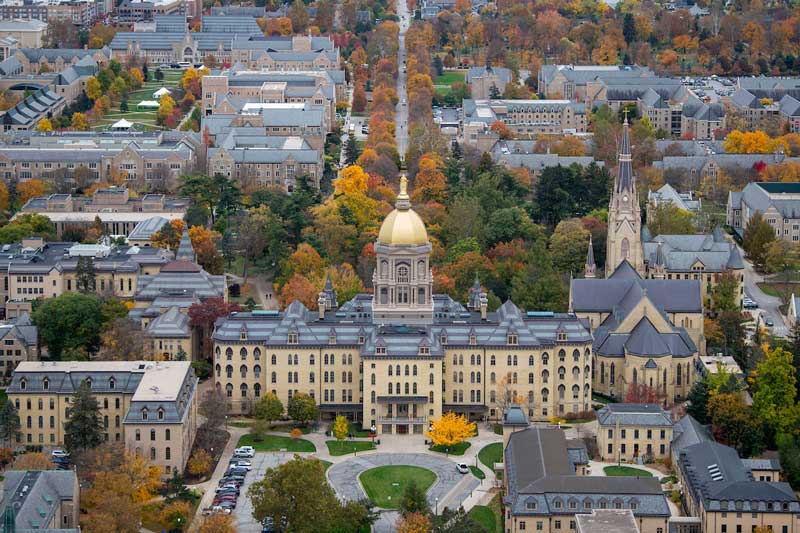
University of Notre Dame, Indiana
The University of Notre Dame, located in Notre Dame, Indiana, is famous for its stunning campus. The university spans 1,250 acres, featuring a mix of historical and modern architecture.
Notre Dame’s most iconic structure is the Golden Dome of the Main Building, especially magnificent at sunset. The campus is also known for its sustainable practices, including green roofs and a butterfly garden.
The Grotto of Our Lady of Lourdes adds to the campus’s spiritual and aesthetic appeal. Notre Dame’s blend of architectural beauty, natural surroundings, and commitment to sustainability makes it a distinctive educational institution.
Flagler College, Florida
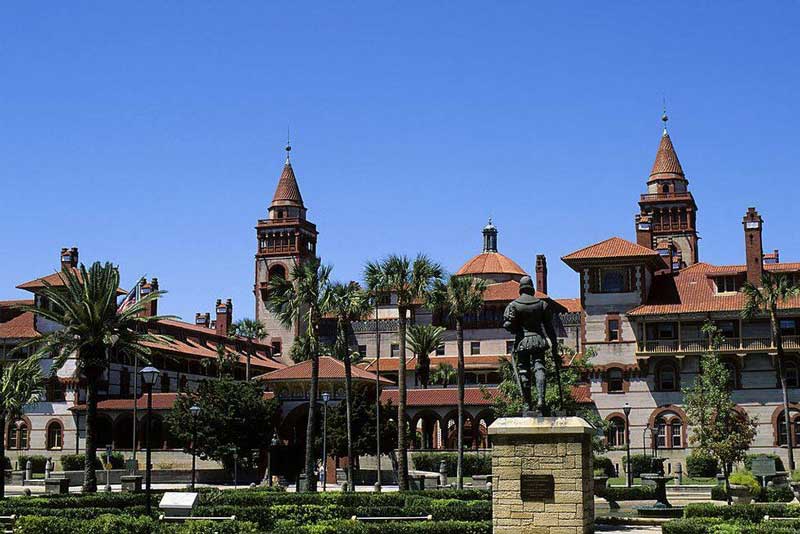
Flagler College, Florida
Flagler College in St. Augustine, Florida, founded in 1968, offers a unique blend of history and education. The campus, spreading across 19 acres, centers around the Ponce de León Hotel, a National Historic Landmark built in 1888.
This architectural marvel, designed by John Carrere and Thomas Hastings, reflects the opulence of the Gilded Age. The college has been recognized for its innovative approach and teaching excellence.
Noteworthy features include the dining hall with original Tiffany stained glass windows and the Flagler Room, showcasing Austrian crystal chandeliers and a Thomas Edison clock.
University of Washington, Washington

University of Washington, Washington
The University of Washington, located in Seattle, spans over 700 acres, offering a picturesque campus on the shores of Lake Washington. Known for its beautiful Quad adorned with Yoshino cherry trees, the campus transforms into a pink-hued wonderland in spring.
The campus is a blend of nature and architecture, featuring attractions like Drumheller Fountain and the University of Washington Botanic Gardens. The Collegiate Gothic Suzzallo Library, with its stained-glass windows and vaulted ceilings, is a highlight, often likened to the halls of Hogwarts.
With its scenic surroundings and architectural gems, the University of Washington provides a visually stunning educational environment.
Berry College, Georgia
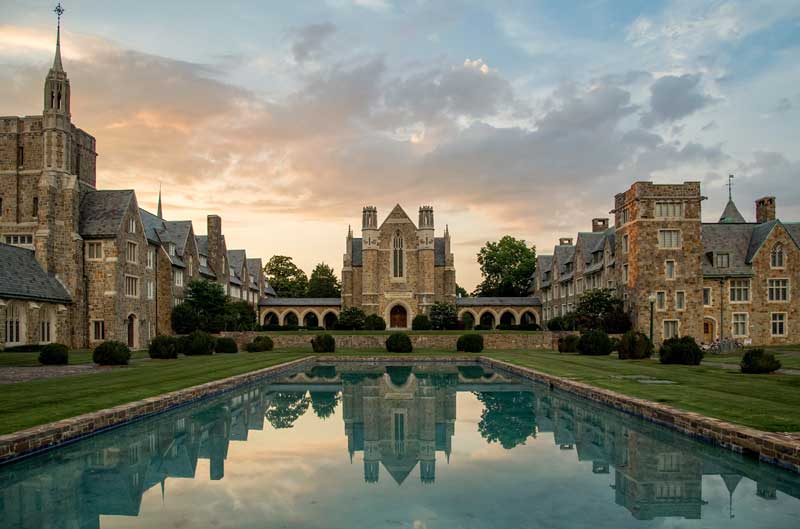
Berry College, Georgia
Berry College in Mount Berry, Georgia, holds the distinction of being the world’s largest contiguous college campus, encompassing over 27,000 acres. This vast expanse includes fields, lakes, forests, and mountains, offering unparalleled natural diversity.
Students enjoy a myriad of outdoor activities, with 88 miles of trails for hiking. The campus harmoniously blends its natural setting with striking architecture, featuring English Gothic-inspired buildings, barns, wood-rail fences, and log cabins.
Among its numerous reflecting pools and fountains, the campus stands out as an extraordinary mix of natural beauty and historical architecture, making it an iconic educational institution.
The University of the South (Sewanee), Tennessee
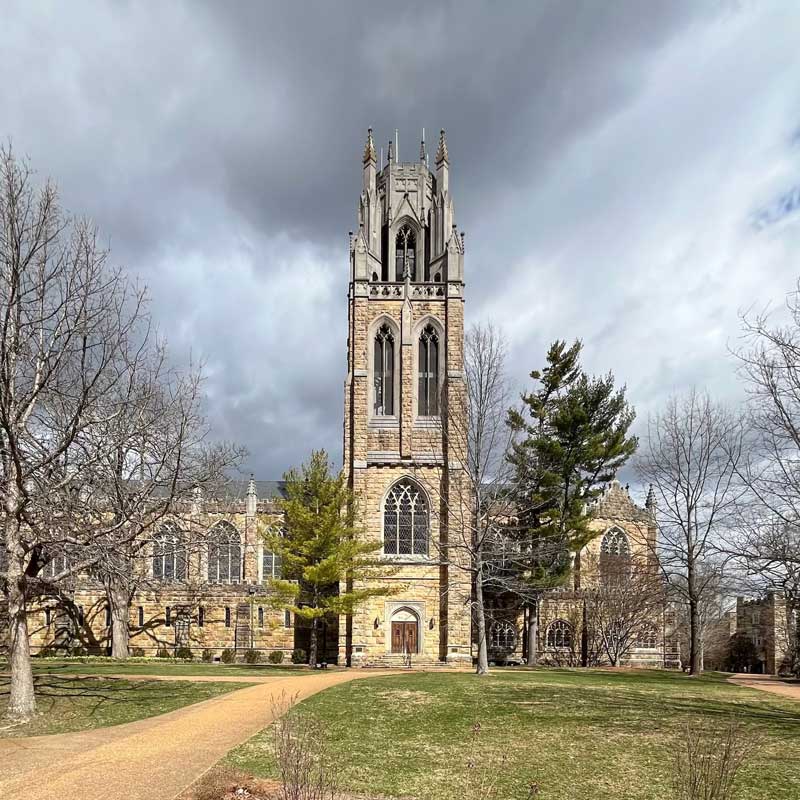
The University of the South (Sewanee), Tennessee
The University of the South, commonly known as Sewanee, is situated on the Cumberland Plateau, covering over 13,000 acres. This expansive campus offers breathtaking views over the Tennessee Valley with its forests, lakefront bluffs, and a garden ravine.
The campus’s architecture is predominantly Gothic-inspired, featuring stone arches and intricately designed dorm buildings. The central Quad is dominated by the All Saints’ Chapel, reminiscent of the University Church at Oxford and Notre Dame in Paris.
Despite its proximity to downtown Sewanee, the campus offers a secluded retreat-like atmosphere, blending its rich architectural heritage with the natural beauty of its surroundings.
Yale University, Connecticut
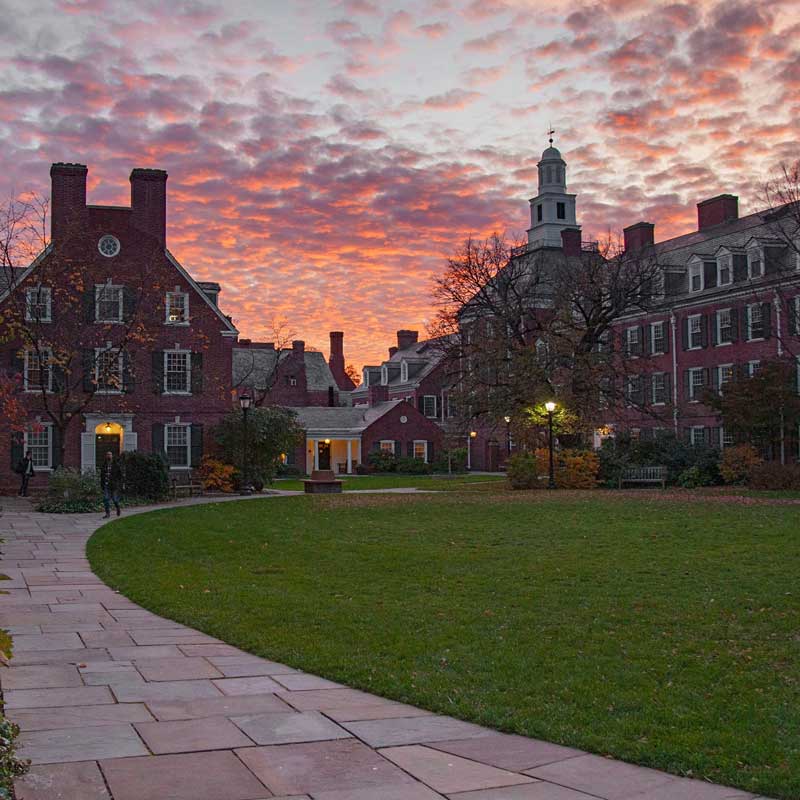
Yale University, Connecticut
Yale University in New Haven, Connecticut, is an emblem of history and architectural beauty. Founded in 1701, it’s the third-oldest institution of higher education in the United States.
The campus, spanning over 1,015 acres, is a blend of the historical and the modern. Yale’s notable buildings and structures reflect a wide range of architectural styles, from Gothic to contemporary. It’s renowned for its picturesque courtyards, historic buildings, and extensive libraries, including the Beinecke Rare Book and Manuscript Library. Yale’s fusion of rich traditions, academic excellence, and striking architecture makes it a standout institution.
Vanderbilt University, Tennessee

Vanderbilt University, Tennessee
Vanderbilt University, set in Nashville, Tennessee, is renowned for its picturesque campus. The university, an arboretum, is spread across 340 acres, featuring a diverse range of flora, sculptures, and art exhibits.
Vanderbilt’s historical and modern architecture includes iconic structures like Kirkland Hall and E. Bronson Ingram College, characterized by their Gothic-style elements.
The campus is adorned with lush gardens and green spaces, offering a serene academic environment. Its combination of natural beauty and architectural elegance provides an enriching backdrop for education and research.
Indiana University-Bloomington, Indiana
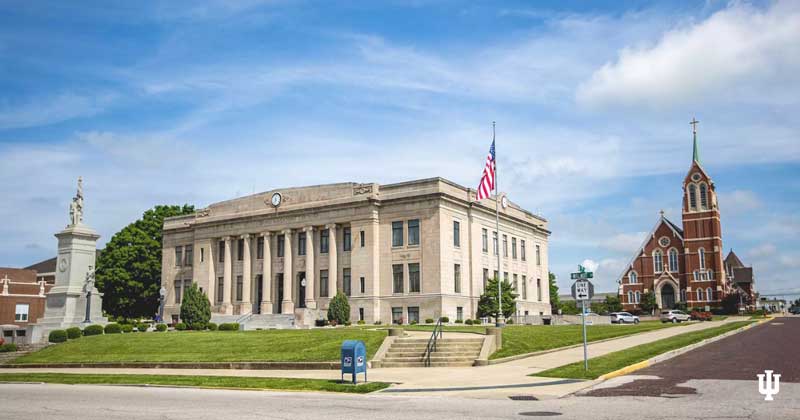
Indiana University-Bloomington, Indiana
Indiana University-Bloomington, nestled in Bloomington, Indiana, is celebrated for its beautiful campus. The university features classic limestone buildings, providing a blend of traditional and contemporary architectural styles.
One of its notable buildings, the Indiana Memorial Union, resembles the iconic Hogwarts from Harry Potter. The campus is enriched with natural beauty, including rustic bridges, babbling creeks, and diverse plant life in the Biology Greenhouse.
With its scenic natural areas and significant architectural landmarks, Indiana University-Bloomington offers a visually stunning and academically enriching environment.
Bard College, New York

Bard College, New York
Bard College, located in Annandale-on-Hudson, New York, is a scenic marvel spanning 1,000 acres on the east shore of the Hudson River. The campus, part of the Hudson River Historic District, a National Historic Landmark, offers breathtaking views of the Catskill Mountains.
Its architecture is a blend of Collegiate Gothic and Postmodern styles, housing over 70 buildings. The campus showcases historic buildings linked to the early development of the college and the Hudson River estates.
Notable modern contributions include works by architects like Robert Venturi, Frank Gehry, and Rafael Viñoly, adding contemporary elegance to its historical backdrop.
University of Hawaii at Mānoa, Hawaii
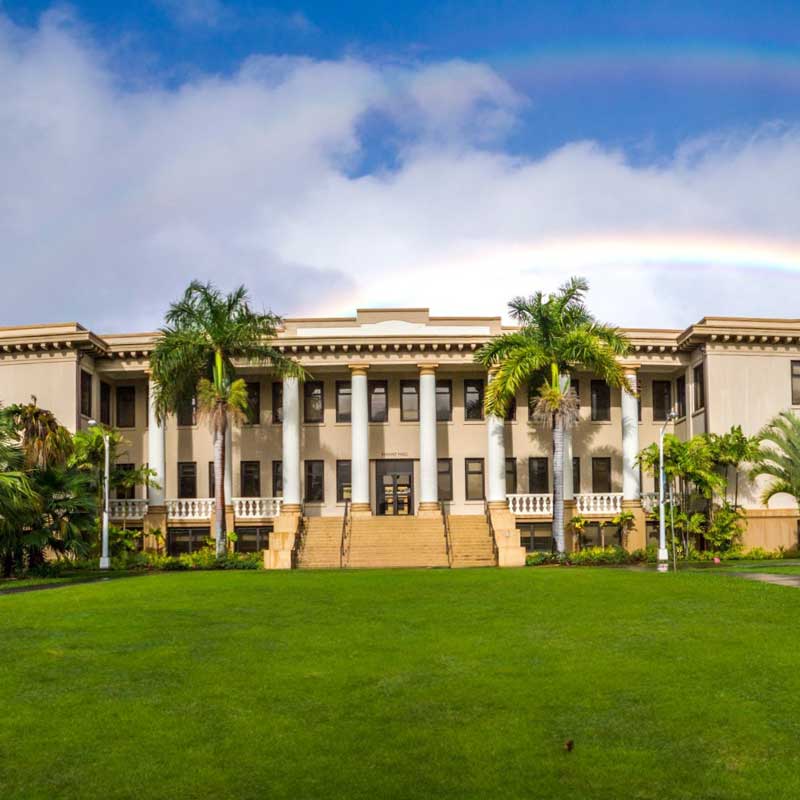
University of Hawaii at Mānoa, Hawaii
The University of Hawaii at Mānoa, set in the lush surroundings of Honolulu, Hawaii, is a campus that beautifully integrates natural beauty with academic facilities.
The 320-acre campus is an ecological marvel, home to over 6,000 plant species and more than 700 plant species, positioning it as one of only two arboretums in Hawaii.
The campus architecture is a harmonious blend of modernist design, characterized by white concrete walls, large windows, and Doric columns. It offers stunning views of the surrounding mountains and is just a short drive from the beach.
University of San Diego, California
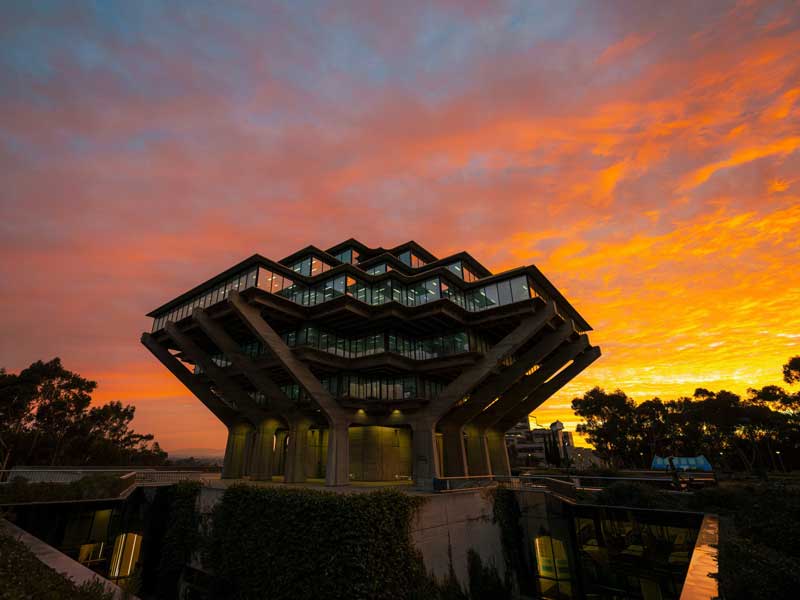
University of San Diego, California
The University of San Diego in California is a picturesque campus known for its Spanish Renaissance architectural style. It features intricate ironwork, carved woodwork, and striking buildings such as the Immaculata Chapel with its blue dome and bronze door.
The campus is situated in a prime location, offering ocean views paired with lush palm trees. The campus layout is designed to maximize the scenic beauty, with the Pacific Ocean just a few miles away.
This combination of historical architecture and natural beauty makes the University of San Diego campus a visually stunning educational setting.
Princeton University, New Jersey
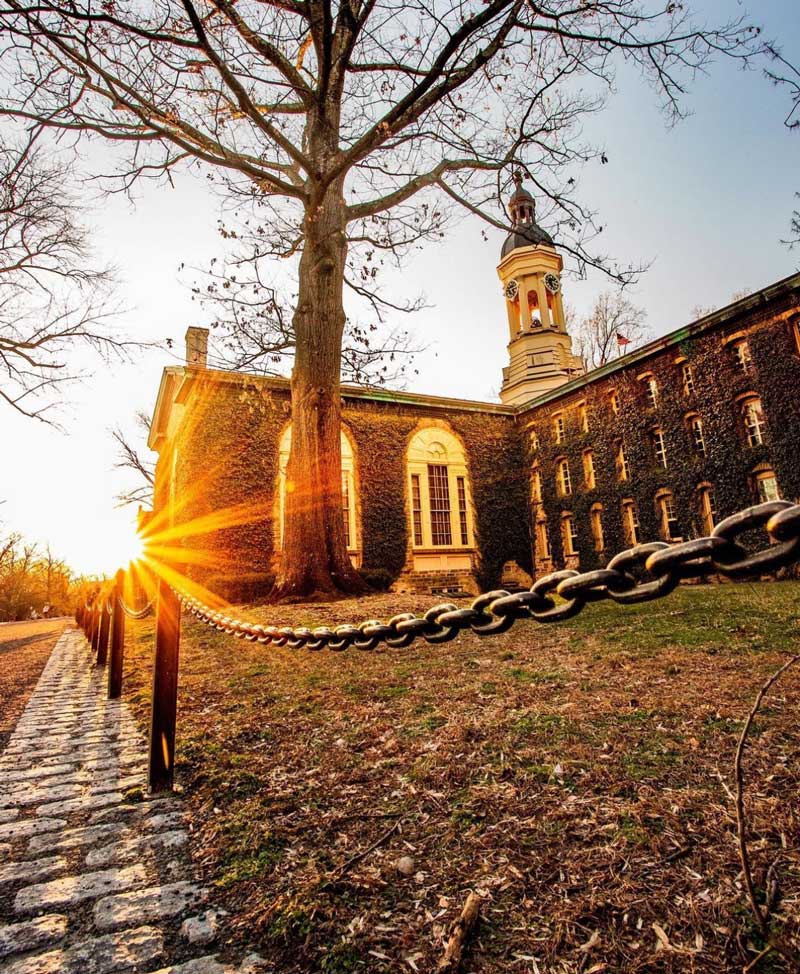
Princeton University, New Jersey
Princeton University in New Jersey is renowned for its collegiate Gothic-style buildings and lush green spaces. The campus spans 500 acres and is known for its historic Nassau Hall, the oldest building on campus covered in ivy.
The university features a variety of outdoor attractions, including Lake Carnegie and the famous Prospect Garden. The Princeton University Chapel, with its stained glass windows, is a highlight of the campus.
Additionally, Princeton is known for its numerous idyllic trails, allowing students to explore the campus’s hidden gems and enjoy the fusion of architectural elegance with natural beauty.
Bryn Mawr College, Pennsylvania
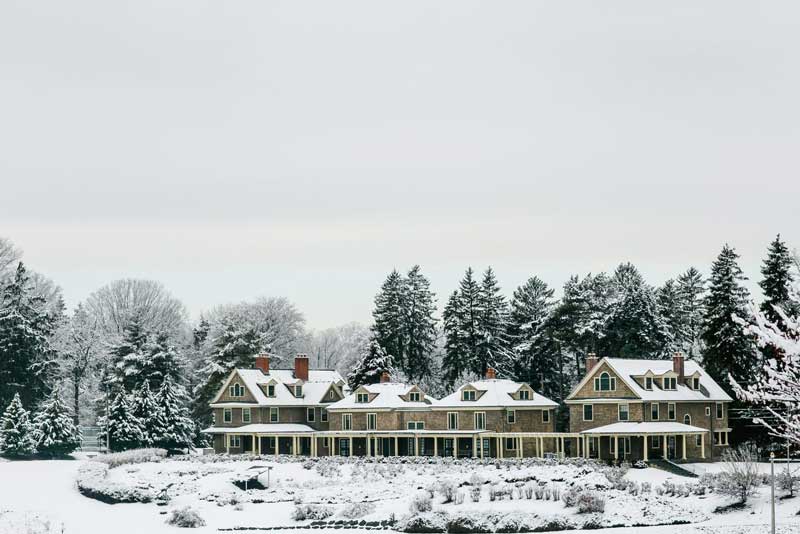
Bryn Mawr College, Pennsylvania
Bryn Mawr College in Pennsylvania is a testament to historic architecture and lush landscapes. Established in 1885, this women’s liberal arts college is part of the prestigious Seven Sisters colleges.
Spread across 135 acres, its campus is designed partly by landscape visionaries like Calvert Vaux and Frederick Law Olmsted, and is recognized as an arboretum. The campus boasts Gothic Revival architecture, with residence halls named after Welsh counties.
Notable buildings like the Erdman Hall, designed by Louis Kahn, and the Marjorie Walter Goodhart Theater, enhance its architectural diversity. The college’s commitment to sustainability is evident in its environmentally responsible practices.
Harvard University, Massachusetts
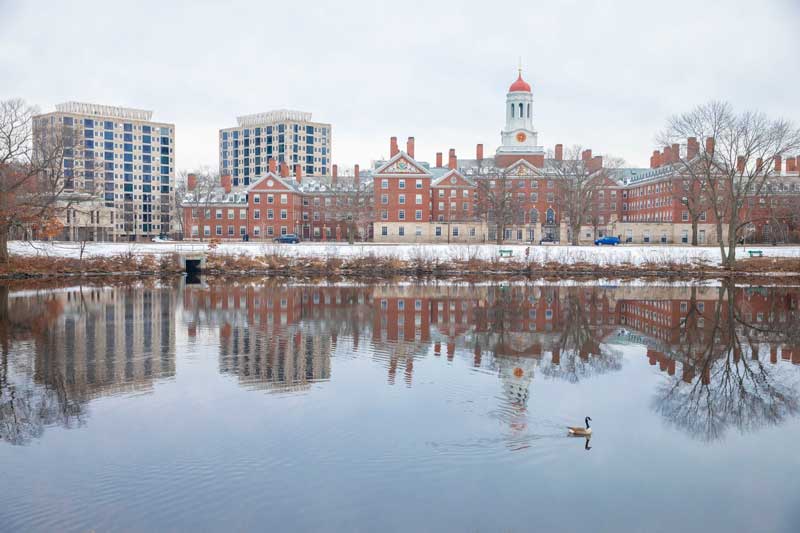
Harvard University, Massachusetts
Harvard University in Massachusetts is an iconic educational institution, renowned not just for its academic prestige but also for its magnificent campus. The oldest institution of higher education in the United States, founded in 1636, it encompasses the historic Harvard Yard, the focal point of the campus.
This area is known for its traditional Ivy League architecture and the famed John Harvard statue. Beyond Harvard Yard, the campus expands into a diverse collection of buildings and green spaces, including the Harvard Arboretum.
Harvard’s commitment to sustainability is evident throughout its campus with eco-friendly buildings and operations.
Furman University, South Carolina
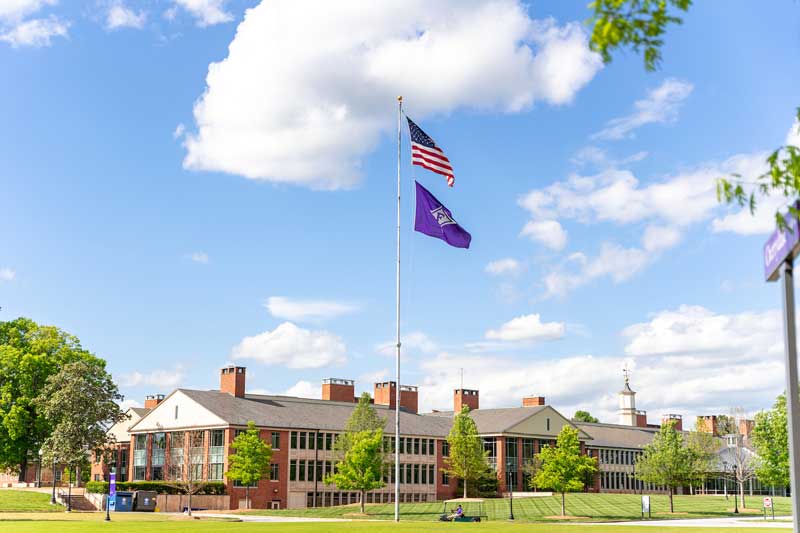
Furman University, South Carolina
Furman University in South Carolina, nestled in the picturesque foothills of the Blue Ridge Mountains, offers a campus that’s as academically rigorous as it is beautiful. The 750-acre campus features Georgian-style architecture with modern facilities.
A striking feature is the Furman Lake, bordered by a walking trail and the iconic Bell Tower. The university’s commitment to sustainability is reflected in its David E. Shi Center for Sustainability and various eco-friendly initiatives.
Furman’s landscape includes a mix of manicured lawns, gardens, and wooded areas, making it a serene and stimulating environment for learning and exploration.
Final Thoughts
The most beautiful college campuses in the U.S. are not just educational institutions; they are masterpieces of architectural and natural beauty. These campuses merge historical and modern designs with lush landscapes, creating inspiring environments for learning and growth.
Each campus, with its unique architectural features and scenic settings, offers a visual feast, enriching the academic experience. Beyond their aesthetic appeal, these campuses reflect the rich cultural and educational heritage of American higher education.
